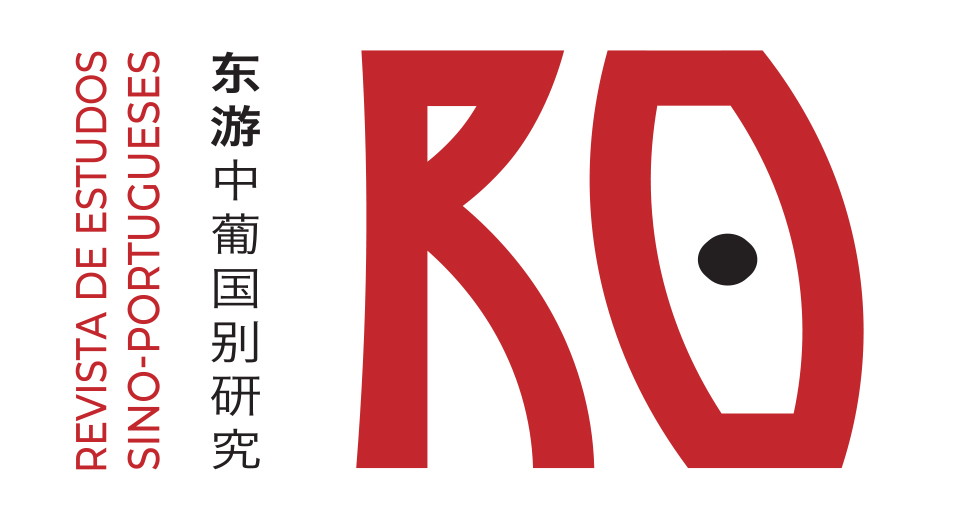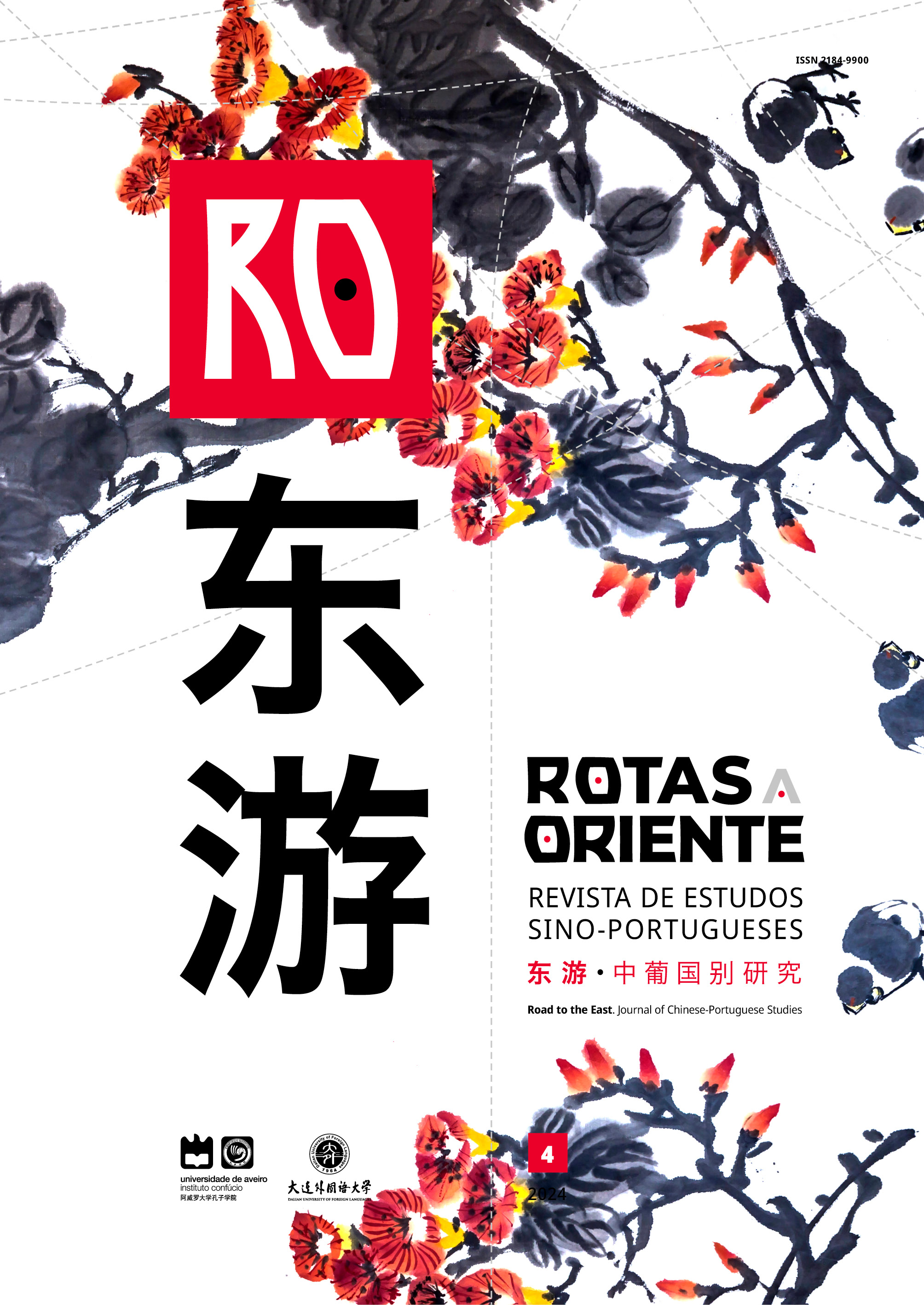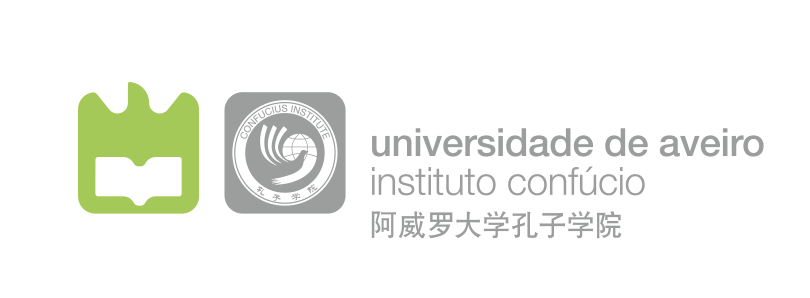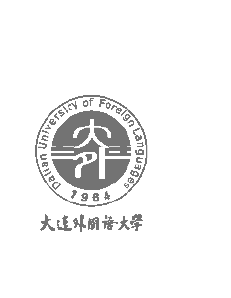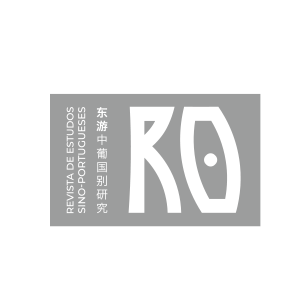O desenvolvimento histórico e científico recente da medicina da corte imperial desde a dinastia Qing
Resumo
A medicina da corte imperial é um ramo da medicina tradicional chinesa (MTC) que fornece serviços médicos e de saúde para a família real desde a China antiga. Acumulou uma riqueza de teorias bem documentadas e experiências de prática clínica, incluindo medicamentos, acupuntura, massagem e outros tratamentos, que refletem as características e necessidades da cultura e do ambiente imperial. Este texto explora o desenvolvimento e destaca as principais características da medicina da corte imperial na Dinastia Qing (1644 d.C.-1911 d.C.) e discute como a medicina da corte imperial foi herdada e posteriormente desenvolvida nos tempos modernos. Resume a prática e a pesquisa da medicina da corte imperial, concentrando-se em dois aspetos principais: dietas medicamentosas para preservação da saúde e estratégias antienvelhecimento, com o objetivo de contribuir para a compreensão e a promoção da medicina da corte imperial como um valioso patrimônio cultural e importante fonte de estratégias de saúde e bem-estar para a sociedade moderna.
Referências
Zheng, X. (2019).《黄帝内经》五运六气气化理论与天人合一 Qi Transformation Theory of Five Evolutive Phases and Six Climatic Factors and Unity of Man with Nature in Inner Canon of Yellow Emperor.《中医杂志》 Journal of Traditional Chinese Medicine, 60(12), 1008-1014.
Li, H., Ma, J., Yin, Y., Chang, L., Gao, M., & Wei, C. (2023). 中医特色疗法的抗衰老研究进展 Research progress in anti-aging characteristic TCM therapies. 《世界中医药》World Chinese Medicine, 18(24), 3608-3615.
Xu, J. (2006). 清朝御药房建制与规模初考Textual Research on Organizational System and Scale of Imperial Drug Institution of Qing Dynasty. 《中华中医药杂志》China Journal of Traditional Chinese Medicine and Pharmacy, 21(9), 518-522.
Xu, J., & Yan, G. (2007). 清朝御用医药机构在帝王吏治中的作用探析Analysis of the Role of Qing Dynasty Imperial Medical Institutions in Imperial Administration. 《世界中西医结合杂志》World Journal of Integrated Traditional and Western Medicine, 2(9), 505-506.
Fan, W. (Ed.). (2017).《黄帝内经》Inner Canon of Huangdi. Chengdu: Sichuan Renmin Press.
Chen, K. (Ed.). (1987).《清代宫廷医话》Qing Dynasty Palace Medical Talk. Beijing: People's Medical Publishing House.
Chen, K. (Ed.). (1981). 《慈禧光绪医方选议》 Selection of Medical Prescriptions for Empress Dowager Cixi and Emperor Guangxu. Beijing: Zhonghua Book Company.
Chen, M., Hu, Q., & Han, F. (2016). 中药胶囊剂装量差异的影响因素与对策研究进展Research progress on the influencing factors and countermeasures of differences in the dosage of traditional Chinese medicine capsules. 《中国药房》 China Pharmacy, 27(34), 4879-4882.
Liu, Y., & Feng, N. (2015). Nanocarriers for the delivery of active ingredients and fractions extracted from natural products used in traditional Chinese medicine (TCM). Advances in colloid and interface science, 221, 60–76.
Wei, D., Yang, H., Zhang, Y., Zhang, X., Wang, J., Wu, X., & Chang, J. (2022). Nano-traditional Chinese medicine: a promising strategy and its recent advances. Journal of materials chemistry. B, 10(16), 2973–2994.
He, H., Li,J., & Huang, X. (2019). 中药免煎颗粒及中药饮片所含有效成分的对比研究A Comparative Study on the Effective Components of Chinese Herbal Medicine in Decocting-Free Granules and Decocting Pieces.《世界中医药》 World Chinese Medicine, 14(11), 2879-2882.
Xu, R., & Sun, L. (2017). 中药茶在常见慢性病中的应用研究进展Research progress on the application of traditional Chinese medicine tea in common chronic diseases.《河北中医》Hebei J TCM, 39(6), 6936-940.
Chen, K., Zhou, W., Li, C., Shi, T., Wang, J., Wang, N., & Deng, Y. (1984). 清宫八仙糕治疗脾虚证的临床观察及实验研究Clinical Observation and Experimental Study on the Treatment of Spleen Deficiency Syndrome with Qinggong Baxian Cake. 《中医杂志》 Journal of Traditional Chinese Medicine, 6, 37-39.
Kaptchuk T. J. (2002). Acupuncture: theory, efficacy, and practice. Annals of internal medicine, 136(5), 374–383.
Zhao, Z. (2008). Neural mechanism underlying acupuncture analgesia. Progress in neurobiology, 85(4), 355–375.
Shan, S. (1985). 清代太医院 Imperial Medical Institution in Qing Dynasty. 《故宫博物院院刊》 Palace Museum Journal , 3, 7.
Chen, K. (Ed.). (1981). 《清宫医案集成》Integration of Qing Palace Medical Cases. Beijing: Traditional Chinese Medicine Classics Press.
Guan, X. (2008). 关于清宫锭子药的几个问题 Several Issues on Qinggong Spindle Medicine.《故宫博物院院刊》Palace Museum Journal, 6, 65-75.
Liu, C., Chen, X., Zheng, P., Zhao, P., & Yuan, M. (2022). 基于古代医事制度探讨现代中医药疫情防治的医政管理Exploring the Medical Administration Management of Modern Traditional Chinese Medicine Epidemic Prevention and Control Based on the Ancient Medical System.《中医药管理杂志》Journal of Traditional Chinese Medicine Management , 30(6), 10-13.
Zhu, J. (2008). 紫金锭的发展源流探讨Exploration of the Development Origins of Zijin Ingot. 《天津中医药大学学报》Journal of Tianjin University of Traditional Chinese Medicine, 27(4), 280.
Guo. (Ed.). (2020). 《中国药典》Chinese Pharmacopoeia Commission. Beijing: The Medicine Science and Technology Press of China.
Zhen, X. (2021). 灵丹妙药艺术珍品清宫里的锭子药Art treasures of ingots in the Qing Palace.《中医健康养生》TCM Healthy Life-Nurturing, 8, 75-77.
Song, Z., Feng, D., Xu, J., & Bi, K. (2003). 桂术甘汤配伍机制及药效物质基础研究Study on the compatibility and therapeutical basis of composite herbal medicines of Lingguishugan Decoction.《中成药》Chinese Traditional Patent Medicine, 2, 47-52.
Wu, T. (Ed.). (1994). 《温病条辨》Differentiation of Warm Diseases Items. Beijing: China Book Store Publisher.
Kou, J., Yu, Z., Gong, S., & Yan, Y. (2004). 小承气汤、厚朴大黄汤及厚朴三物汤药理作用The actions of Xiaochengqi DecoctionHoupusanwu Decoction and Houpudahuang Decoction.《中成药》Chinese Traditional Patent Medicine, 1, 59-61.
Li, W., Meng, Y.,Chen, H., Chen, H., Huang, X., Yang. M., & Yang, W. (2020). 小承气汤的研究概况Review of Research on Xiao Chengqitang 《中国实验方剂学杂志》Chinese Journal of Experimental Traditional Medical Formulae, 26(2), 241-250.
Ji, E., Wang, T., Xu, J., Fan, J., Zhang, Y., Guan, Y., Yang, H., Wei, J., Zhang, G., & Huang, L. (2020). Systematic Investigation of the Efficacy of Sinitang Decoction Against Ulcerative Colitis. Frontiers in pharmacology, 11, 1337.
Zhou, Y., Qiu, M., Hu, Z., Yang, H., Ming, G., & Cai, Y. (2014). 沙参麦冬汤对放射性肺炎大鼠血浆IL-6,TNF-α,TGF-β_1的影响Effects of Shashen Maidong Decoction on Plasma IL-6, TNF-α, TGF-β1 in Radioation Pneumonitis Rats.《中国实验方剂学杂志》Chinese Journal of Experimental Traditional Medical Formulae, 16, 165-168.
Pan, Y. (2020). 桑杏汤加减结合中医定向透药疗法治疗小儿肺炎(风热犯肺证)的疗效Effect of Modified Sangxing Decoction Combined with TCM - Based Permeation Therapy in Treating Children Pneumonia of Wind - Heat Invading Lung.《中医药信息》 Information on Traditional Chinese Medicine, 37(3), 92-96.
Zhang, T. Z., Yang, S. H., Yao, J. F., Du, J., & Yan, T. H. (2015). Sangxingtang inhibits the inflammation of LPS-induced acute lung injury in mice by down-regulating the MAPK/NF-κB pathway. Chinese journal of natural medicines, 13(12), 889–895.
Chen, J., & Dai, E. (2016). 升阳益胃汤治疗慢性萎缩性胃炎脾胃虚弱证的疗效观察Clinical Observation on Shengyang Yiwei Decoction for Deficiency of Spleen and Stomach of Chronic Atrophic Gastritis. 《中国现代应用药学》Chinese Journal of Modern Applied Pharmacy, 33,1056-1059.
Mullins, A. P., & Arjmandi, B. H. (2021). Health Benefits of Plant-Based Nutrition: Focus on Beans in Cardiometabolic Diseases. Nutrients, 13(2), 519.
Shi, Y., & Zhang, H. (2015). 粗针透刺身柱穴对帕金森病患者UPDRS评分的影响Effect of Penetrating Needling with Thick Needle at Shenzhu (GV 12) on the Unified Parkinson’s Disease Rating Scale Score.《上海针灸杂志》Shanghai Journal of Acupuncture and Moxibustion, 34(9), 32-33.
Yin, L., Jin, X., Shi, X., Tian, J., Ma, L., Yin, D., & Zeng, H. (2002). 针刺足三里穴PET和fMRI脑功能成像的初步探讨Imaging with PET and fMRI on brain function in acupuncturing the ST36(Zusanli).《中国康复理论与实践》Chinese Journal of Rehabilitation Theory and Practice, 2002(09),14-15.
Zhang (Ed.). (2014). 中华食疗大全Chinese Dietary Therapy Encyclopedia. Tianjin: Tianjin science and technology press.
Liu, L., Yang, P., Zhang, Y., Zhai, Y., & Li, J. (2021). 食疗处方调治优势在临床推广的实践与体会Practice and Experience of Promoting the Advantages of Dietary Therapy Prescription Adjustment in Clinical Practice. 《医学食疗与健康》Medical Diet and Health, 19(01), 17-19.
Xie, G., Tang, X.,Liang, X. Liu, H., & Zhang, S. (2020). 药食同源的源流内涵及定义The Origination,Connotation,and Definition of One Root of Medicine and Food《中国现代中药》Modern Chinese Medicine, 9, 1423-1427+1462.
Mu, L., Gu, C., Xu, L., Wang, L., & Tong, X. (2017). 平性药药性及应用特点The Property and Application Characteristics of Neutral Herbs. 中医杂志Journal of Traditional Chinese Medicine, 58(01), 23-26+45.
Wen, Y., Chen, Y., & Zhang, Q. (2020). 清代宫廷食疗特色初探 Preliminary Study on the Characteristics of Imperial Diet Therapy in Qing Dynasty.《浙江中医药大学学报》Journal of Zhejiang Chinese Medical University, 44(07), 688-691.
Huang, N. (2016). 炙甘草汤加减治疗冠心病心律失常80例疗效分析Analysis of the therapeutic effect of modified Zhi Gan Cao Tang on 80 cases of coronary heart disease and arrhythmia.《中西医结合心血管病电子杂志》Cardiovascular Disease Journal of Integrated Traditional Chinese and Western Medicine, 4 (15), 47-48.
Ranneh, Y., Akim, A. M., Hamid, H. A., Khazaai, H., Fadel, A., Zakaria, Z. A., Albujja, M., & Bakar, M. F. A. (2021). Honey and its nutritional and anti-inflammatory value. BMC complementary medicine and therapies, 21(1), 30.
Chen, S. (2018). 蜂蜜化学成分及其主要生物学功能研究进展分析Research Progress on Chemical Constituents and Main Biological Functions of Honey. 《现代食品》Modern Food, 13, 53-54+57.
Hou, X., Tang, L., Yuan, Y., Han, W., & Liu, M. (2016). 青果水提物抑制α-葡萄糖苷酶及改善糖脂代谢作用研究Inhibition of Qingguo water extract α- Research on Glucosidase and Its Effect on Improving Glucose and Lipid Metabolism. 《中药材》Journal of Chinese Medicinal Materials, 5, 1152-1155.
Yuan, H., Jiang, S., Liu, Y., Daniyal, M., Jian, Y., Peng, C., Shen, J., Liu, S., & Wang, W. (2020). The flower head of Chrysanthemum morifolium Ramat. (Juhua): A paradigm of flowers serving as Chinese dietary herbal medicine. Journal of ethnopharmacology, 261, 113043.
Zou, Y. T., Zhou, J., Wu, C. Y., Zhang, W., Shen, H., Xu, J. D., Zhang, Y. Q., Long, F., & Li, S. L. (2021). Protective effects of Poria cocos and its components against cisplatin-induced intestinal injury. Journal of ethnopharmacology, 269, 113722.
Zhang, L., Wang, Y., Yang, D., Zhang, C., Zhang, N., Li, M., & Liu, Y. (2015). Platycodon grandiflorus - an ethnopharmacological, phytochemical and pharmacological review. Journal of ethnopharmacology, 164, 147–161.
Mancuso, C., & Santangelo, R. (2017). Panax ginseng and Panax quinquefolius: From pharmacology to toxicology. Food and chemical toxicology : an international journal published for the British Industrial Biological Research Association, 107(Pt A), 362–372.
Zhou, W. (1998). 酒之药用及清宫益寿酒剂Medicinal use of alcohol and Qinggong Yishou liquor.《科技潮》The Tide of Science & Technology,12, 57.
Zhao, X. (2022). 药酒的保健功效Health benefits of medicinal wine.《中国食品》China Food, 22, 100-102.
Guo, H. (2020). 来款精致的宫廷药膳下午茶Delicate palace Tonic Diet afternoon tea.《中医健康养生》TCMHealthyLife-Nurturing, 6(2), 8-11.
Li, J., & Ma, J. (2013). 中医衰老理论与抗衰老的实验研究进展Aging Theories of TCM and Experimental Research Progress of Anti-aging. 《中医学报》China Journal of Chinese Medicine, 28(2), 4.
Zhang, C., Li, J., & Chen, G. (2015). 中医延缓衰老方法探析Study on Anti-aging Methods of Traditional Chinese Medicine. 《湖北中医药大学学报》 Journal of Hubei University of Chinese Medicine, 17(6), 4.
Liu, P., Zhao, H., & Luo, Y. (2017). Anti-Aging Implications of Astragalus Membranaceus (Huangqi): A Well-Known Chinese Tonic. Aging and disease, 8(6), 868–886.
Chiu, H. F., Fu, H. Y., Lu, Y. Y., Han, Y. C., Shen, Y. C., Venkatakrishnan, K., Golovinskaia, O., & Wang, C. K. (2017). Triterpenoids and polysaccharide peptides-enriched Ganoderma lucidum: a randomized, double-blind placebo-controlled crossover study of its antioxidation and hepatoprotective efficacy in healthy volunteers. Pharmaceutical biology, 55(1), 1041–1046.
Chen, Y. C., Chen, Y. H., Pan, B. S., Chang, M. M., & Huang, B. M. (2017). Functional study of Cordyceps sinensis and cordycepin in male reproduction: A review. Journal of food and drug analysis, 25(1), 197–205.
Lu, J., He, R., Sun, P., Zhang, F., Linhardt, R. J., & Zhang, A. (2020). Molecular mechanisms of bioactive polysaccharides from Ganoderma lucidum (Lingzhi), a review. International journal of biological macromolecules, 150, 765–774.
Chen, K., Zhou, W., Li, C., Shi,T.,Lei, S., & Li, X. (1984). 清宫寿桃丸延缓衰老的临床研究——临床效应及其对血浆过氧化脂质水平影响的观察Clinical Study on Delaying Aging with Qinggong Shoutao Pill: Clinical Effects and Observation of Its Influence on Plasma Lipid Peroxide Levels.《中国中西医结合杂志》Chinese Journal of Integrated Traditional and Western Medicine, 642, 658-659.
Yuan, R., Zhang, Y., Wang, Y., Cong, W., & Chen, K. (2019). 清宫寿桃丸对记忆障碍小鼠学习记忆的影响Effect of Qinggong Shoutao Pill on Learning and Memory in Dysmnesia Mice.《中国中西医结合杂志》Chinese Journal of Integrated Traditional and Western Medicine, 39(1), 4.
Wang, X., & Jin, J. (2023) 清代寿桃纹样文化涵义及纹样解析浙江纺织Cultural Meaning and Pattern Analysis of Longevity Peach Pattern in the Qing Dynasty《服装职业技术学院学报》Journal of Zhejiang Textile & Fashion College, 22(4), 61-66.
Zhang, J., Wang, Y., Chen, F., Li, H., Tan, Y., & Li, Y. (2013). 益智的化学成分与药理作用研究进展 Progress on Chemical Constituents and Pharmacological Activities of Alpiniae Oxyphyllae Fructus. 《天然产物研究与开发》Natural Product Research and Development, 25(2), 280-287.
Lin, M., Sun, W., Gong, W., Ding, Y., Zhuang, Y., & Hou, Q. (2015). Ginsenoside Rg1 protects against transient focal cerebral ischemic injury and suppresses its systemic metabolic changes in cerabral injury rats. Acta pharmaceutica Sinica. B, 5(3), 277–284.
Zhang, Q., Zheng, Y., Hu, X., Hu, X., Lv, W., Lv, D., Chen, J., Wu, M., Song, Q., & Shentu, J. (2018). Ethnopharmacological uses, phytochemistry, biological activities, and therapeutic applications of Alpinia oxyphylla Miquel: A review. Journal of ethnopharmacology, 224, 149–168.
Wang, D., Ho, C. T., & Bai, N. (2022). Ziziphi Spinosae Semen: An updated review on pharmacological activity, quality control, and application. Journal of food biochemistry, 46(7), e14153.
Wang, J., Zhang, Y., Zhang, M., Sun, S., Zhong, Y., Han, L., Xu, Y., Wan, D., Zhang, J., & Zhu, H. (2022). Feasibility of Catalpol Intranasal Administration and Its Protective Effect on Acute Cerebral Ischemia in Rats via Anti-Oxidative and Anti-Apoptotic Mechanisms. Drug design, development and therapy, 16, 279–296.
Gan, X., Shu, Z., Wang, X., Yan, D., Li, J., Ofaim, S., Albert, R., Li, X., Liu, B., Zhou, X., & Barabási, A. L. (2023). Network medicine framework reveals generic herb-symptom effectiveness of traditional Chinese medicine. Science advances, 9(43), eadh0215.
Zhou, H., Li, S., Li, C., Yang, X., Li, H., Zhong, H., Lu, J. H., & Lee, S. M. (2020). Oxyphylla A Promotes Degradation of α-Synuclein for Neuroprotection via Activation of Immunoproteasome. Aging and disease, 11(3), 559–574.
Li, J., Du, Q., Li, N., Du, S., & Sun, Z. (2021). Alpiniae oxyphyllae Fructus and Alzheimer's disease: An update and current perspective on this traditional Chinese medicine. Biomedicine & pharmacotherapy = Biomedecine & pharmacotherapie, 135, 111167.
Zhang, Q., Zheng, Y., Hu, X., Hu, X., Lv, W., Lv, D., Chen, J., Wu, M., Song, Q., & Shentu, J. (2018). Ethnopharmacological uses, phytochemistry, biological activities, and therapeutic applications of Alpinia oxyphylla Miquel: A review. Journal of ethnopharmacology, 224, 149–168.
Liang, C., Hui, N., Liu, Y., Qiao, G., Li, J., Tian, L., Ju, X., Jia, M., Liu, H., Cao, W., Yu, P., Li, H., & Ren, X. (2021). Insights into forsythia honeysuckle (Lianhuaqingwen) capsules: A Chinese herbal medicine repurposed for COVID-19 pandemic. Phytomedicine plus: international journal of phytotherapy and phytopharmacology, 1(2), 100027.

Este trabalho está licenciado com uma Licença Creative Commons - Atribuição 4.0 Internacional.
Os direitos permanecem com os autores.
Licença Creative Commons: Atribuição 4.0 Internacional.
